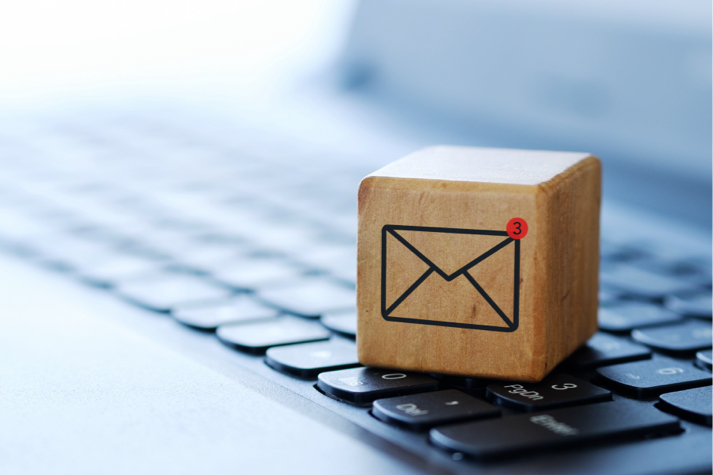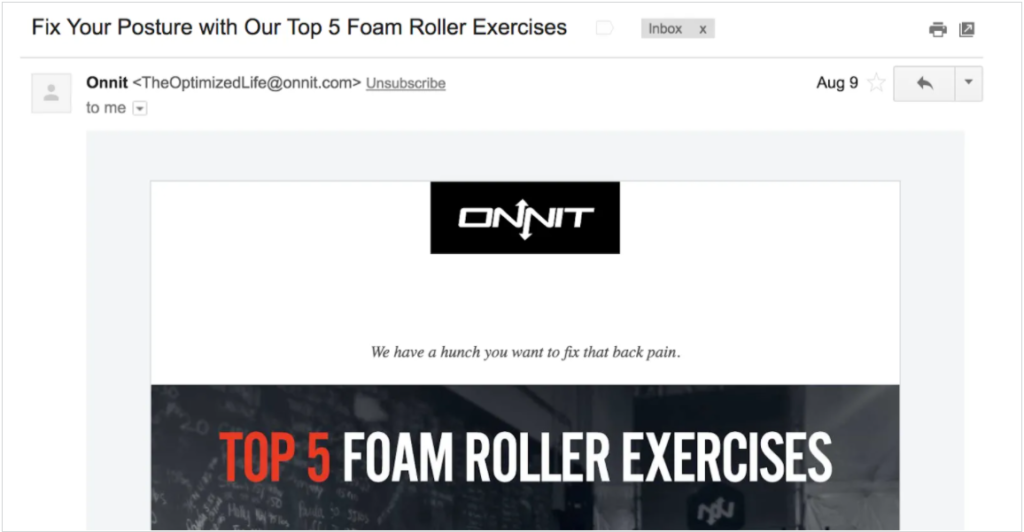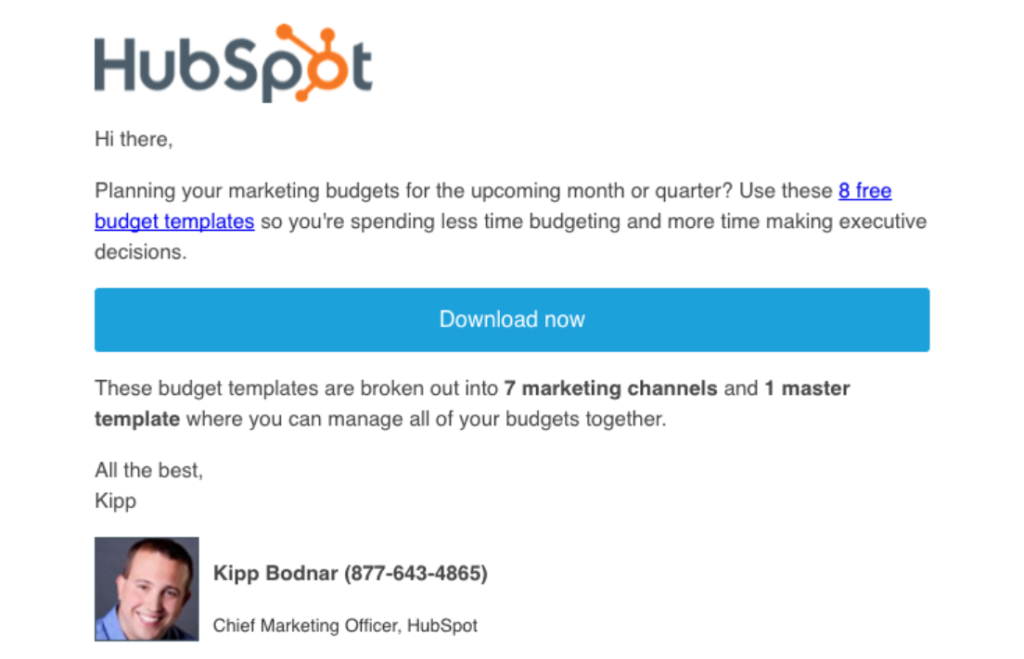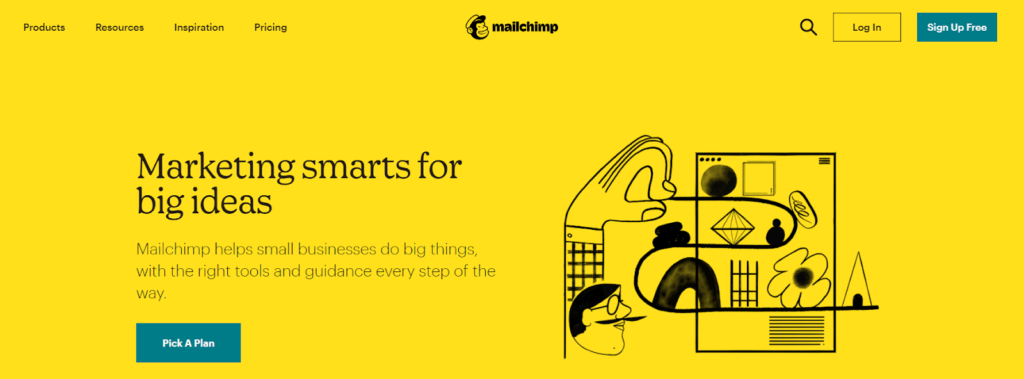Social media has become a popular marketing channel in recent years. Other content types such as video streaming are on the rise due to the pandemic. Therefore, it might seem like email is slowly becoming a thing of the past.
However, nothing could be further from the truth.
Email marketing is still the most effective way to reach your existing customers and new prospects. In fact, personalized mid-funnel marketing emails that are relevant to your audience’s interests can dramatically boost your conversions and help you build long-lasting relationships.
In this article, we’re going to debunk some of the most popular email marketing myths. We’ll also discuss why this channel should remain an essential element of your digital strategy. Let’s get started!
Why Email Is Still a Valuable Digital Marketing Channel

Email marketing is not just a useful tool for direct customer communication. It is that, but it’s also the most profitable of all marketing channels, offering on average 4,400 percent ROI (or $44 for every dollar spent).
Moreover, email is 40 times more effective at customer acquisition than social media. Therefore, if you’ve ditched email marketing recently, thinking that it was no longer profitable, you’re likely missing out on a lot of potential revenue.
Of course, it’s not enough to blast out emails and hope for the best. Case studies show that you also need to spend time on proper email segmentation and dive into understanding user behavior. For example, one SaaS company managed to increase conversions by as much as 450 percent by making a few changes to its email marketing strategy.
Its content consisted of the following elements:
- Customer onboarding emails: Vero enticed its subscribers with free trial offers, followed by a series of nurturing emails that turned many of those users into paying customers.
- Blog updates: The company also sent out regular emails with its latest blog posts, which kept its readers engaged and loyal to the brand.
- Online courses: Vero also created a free marketing course, which aimed to convert course subscribers into trial customers upon completion.
- Ad-hoc offers: Finally, the company sent out occasional special offers to support other campaigns.
You could easily follow these universal tips and apply this content strategy to your marketing efforts. It helps to think about email as one of the ‘spokes’ in the Hub and Spoke digital marketing strategy. You need to have a central goal, a marketing strategy, and a website (the hub). All of your supporting pieces of content, spokes like email, feed into the central hub and lead your customers towards your desired outcome (the sale).
In this case, email is one of the key content pieces within the marketing funnel that drives subscribers towards the landing page, where they can convert into paying customers. However, don’t treat email as a hard-selling tactic only. Instead, it’s smart to use email to create value beyond functional benefits.
Quick Tips to Improve Your Email Marketing Strategy
Looking back at the Vero case, that company used email as an essential part of the customer journey. Its subscribers found value in engaging blog posts, free educational courses, and finally, an offer where they could try the product for free and upgrade if they liked it.
Note that Vero also took its time to observe how subscribers engaged with its emails. This enabled the company to segment its customers into several groups and target its products more effectively.
To achieve similar success, it’s smart to follow a clear marketing strategy and to have a plan that maximizes your efforts. Once you convince a person to sign up for your mailing list, you’ll need to lead them through a well-designed customer journey; otherwise, you might be wasting your time. Your customer path should consider the onboarding process, relationship building, and finally, the conversion.
It pays off to have a consistent schedule so that your subscribers look forward to receiving your emails rather than resenting you for spammy and unpredictable behavior. Depending on your brand, it might be smart to adopt a more conversational tone rather than a business-like writing style.
For instance, some of the most effective emails contain the following elements in their copy:
- Personalization. Irrelevant offers that start with “Dear Subscriber” won’t make a positive impression. Therefore, make sure to segment your audience into interest or product preference groups, and use dynamic name tags.
- Relevancy. Personalization can help your messages appear more relevant to your target readers. You can also leverage urgent reasons why someone is receiving your email, such as an expiring subscription.
- Actionable language. Use action verbs like “download,” “buy,” or “book now” to guide the reader towards the desired action in your Calls to Action (CTAs).
- Clarity. Make sure your emails are easy to understand, even if you’re using creative puns or jokes.
- Consistency. If your subject line is misleading and your copy doesn’t deliver on the initial promise, your click-through rates will likely plummet.
- Benefits. Your product might have impressive features, but if you don’t outline the reader’s actual benefits, they might skip on your offer.
- Human touch. Write with one person in mind, not thousands of subscribers. Also, an email signature with personal contact details rather than general branding can yield better results, as it looks more genuine.

Finally, don’t forget to design with mobile users in mind and ensure that all CTA buttons are touch-ready. According to HubSpot, 78% of marketers saw a considerable increase in email engagement once they adapted a responsive design. Therefore, it’s best not to overlook mobile users when developing your email marketing strategy.
Five Popular Email Marketing Myths Debunked
Now that we’ve discussed why email is still a highly effective marketing strategy, let’s debunk some of the most popular myths.
1. Nobody Opens Emails
This myth is likely the reason some marketers abandon email altogether. They see low open rates in their campaign results, so they assume that nobody reads emails anymore.
However, consumers do still read emails, provided that the subject lines and preview text are exciting or promise something in return. In fact, nearly one-third of all emails are opened based on that factor alone. So if you’re not seeing the metrics you were hoping for, you might want to revisit your subject line copy.
Note that you also shouldn’t focus on the hard sell all the time. What tends to work best are emails that create value and build relationships. As seen in the Vero case study discussed earlier, customers appreciate a free course, product trial invitation, or useful tips related to their interests (segmentation).
Therefore, if you consistently provide valuable content, your open rates should eventually improve:

If you still doubt whether consumers read emails: 66 percent of online US consumers make their purchases via offers that land in their inboxes. Therefore, it’s worth putting effort into crafting irresistible subject lines and email content that your subscribers won’t be able to resist.
2. Your Emails Need to Have Graphics to Be Effective
Many marketers wrongly assume that emails need to be packed with fancy graphics to be effective. While some visuals can help your cause, and it’s crucial for your design to have clear CTAs, it’s actually better to keep graphics on the lighter side.
According to a recent HubSpot study, consumers respond best to plain text and a simple design. The company conducted A/B testing of HTML and text-based messages, and its findings yielded interesting results.
When asked, users say they prefer HTML emails. However, in practice, graphics-heavy messages are typically filtered out by their email providers, resulting in lower open rates. Besides, text emails with minimal branding are better at relationship building.
Email is considered a one-to-one interaction, so plain emails feel more personal than overly-polished ones:

Therefore, rather than obsessing over fancy graphics, it’s smart to develop engaging content, write compelling copy, and focus on the customer journey. Also, if you do decide to include any visual elements, make sure they are responsive. A whopping 80 percent of emails are opened on mobile devices, which is another reason to choose text over HTML.
3. You Should Stop Emailing Inactive Customers
Another common myth is that you should remove inactive customers from your subscriber list immediately. Users who don’t read your emails lower your overall open rates, which could hurt your sender reputation in the long run, so there is a grain of truth in this statement. However, you shouldn’t stop emailing those customers just yet.
Studies show that an inactive subscriber is worth 32 percent of an active one. So while they’re less valuable, you could still be losing out on considerable revenue if you give up on them too quickly. As such, before you stop communicating with this audience, it’s best to see if you can spark a renewed interest with a few re-engagement campaigns.
Before you proceed with this strategy, you may want to segment your inactive users into three groups:
- Dormant customers. These users used to be active customers but stopped reading your emails for some reason. This group is most likely to convert back into active consumers with the right re-engagement campaign. For instance, you may offer them a generous discount code or a link back to your website.
- Zombies. These customers have been dormant for a long time, which means they haven’t opened your emails for several months. This group is less likely to respond to your re-engagement offers, but it’s still worth a try. If none of your efforts work, you may want to decrease the number of emails gradually. Then, you can stop emailing this group entirely if there is no engagement within a year.
- Ghosts. These users subscribed to your mailing list at one point, but they never purchased any of your items or opened any emails. In this case, it’s best to remove them altogether.
Finally, it’s a good idea to automate your campaigns with a provider like Mailchimp:

This way, you can get clearer information about your inactive subscribers and track the results of your re-engagement campaigns. You can also perform A/B testing on your subject lines and see how that affects your open rates.
4. Younger Customers Don’t Read Emails
If you think that the younger generation only communicates with brands via social media, you’re in for a shock. Research suggests that both Millennials and Generation Z still prefer email as the most personal and direct marketing communication channel. They are also the most likely to use the Promotions tab in Gmail, which means they are open to receiving offers from brands:

Moreover, the younger generation checks their inboxes several times a day. It should come as no surprise, considering that most users in this demographic own several devices to stay connected with the digital world 24/7. Therefore, to make your email strategy more effective with this target group, you’ll need to ensure that your design is fully responsive.
Of course, you should still focus on your social media activities, as that’s an excellent way to connect with your new young prospects. However, don’t overlook email as a tool to communicate with Millennials and Generation Z, as they are highly likely to engage (especially if you follow best personalization practices).
5. Email Service Providers Are Expensive
Finally, this fifth popular myth can seem to pose a barrier to many small businesses. Contrary to what some marketers think, however, email service providers don’t have to be expensive. In fact, they can help you boost conversions, increasing revenue in the long run.
Sending emails manually and managing all of your contacts takes a lot of time and effort. Automation software such as Mailchimp can help you streamline the process with more targeted communications. What’s more, automated services enable you to design and manage a compelling customer journey, engaging with the right users at the right time based on specific triggers.
Unless you need enterprise-level solutions, there are plenty of affordable or even free email marketing tools. If you’re using Mailchimp and need support, Inn8ly has an agency account with Mailchimp, which lets us access your account and provide support. For example, we can help you set up your email automation or answer any questions you may have.
Email Marketing Myths Debunked – Conclusion
Without a doubt, email is still a highly efficient and cost-effective digital marketing tactic. However, rather than overflowing your subscribers’ inboxes with emails, it’s smart to put an extra effort into personalization, segmentation, and writing content that supports the customer journey.
And at risk of belaboring the obvious, you need to have an email list. After your website, your email list is the most valuable digital asset that you own. Take every opportunity to build your list.
In this article, we’ve debunked five of the most popular email marketing myths. To recap:
- Consumers are still highly likely to open your emails if they see an enticing subject line.
- You don’t need to overload your messages with graphics to see positive results. In fact, plain text emails are often more effective.
- Inactive customers might still re-engage, so wait at least six months before you remove them from your list.
- Millennials and Generation Z check their inboxes several times a day, and they want brands to engage via email.
- Email service providers don’t have to be expensive. There are plenty of affordable options, such as Mailchimp.
Do you have questions about any of these email marketing myths? Let us know in the comments section below!
Author: James Hipkin
Since 2010, James Hipkin has built his clients’ businesses with digital marketing. Today, James is passionate about websites and helping the rest of us understand online marketing. His customers value his jargon-free, common-sense approach. “James explains the ins and outs of digital marketing in ways that make sense.”
Use this link to book a meeting time with James.

